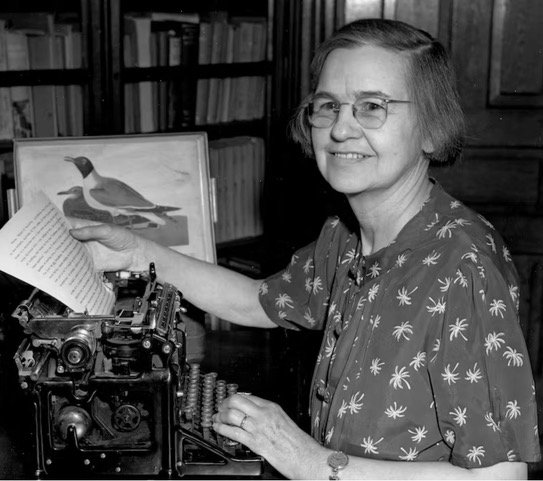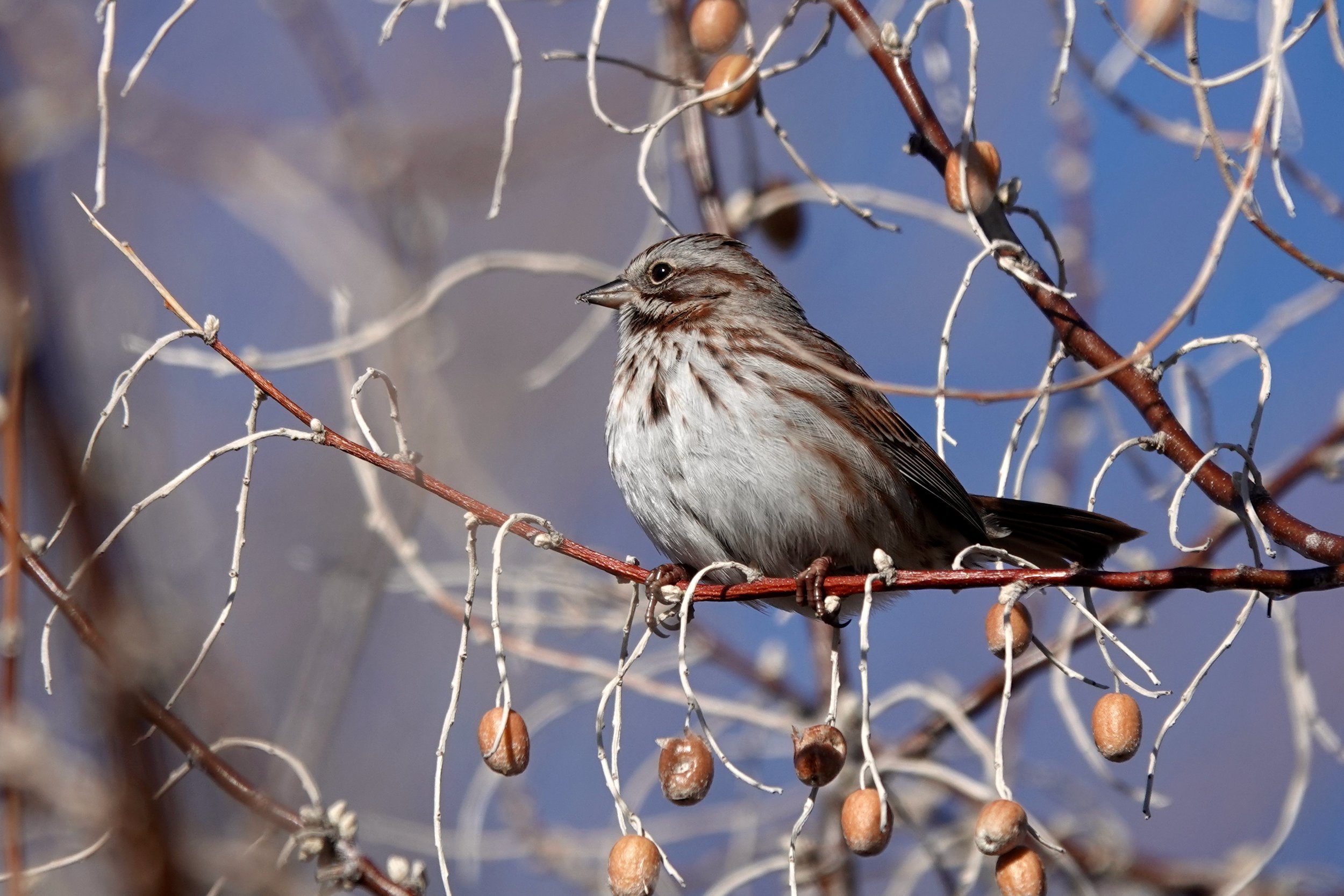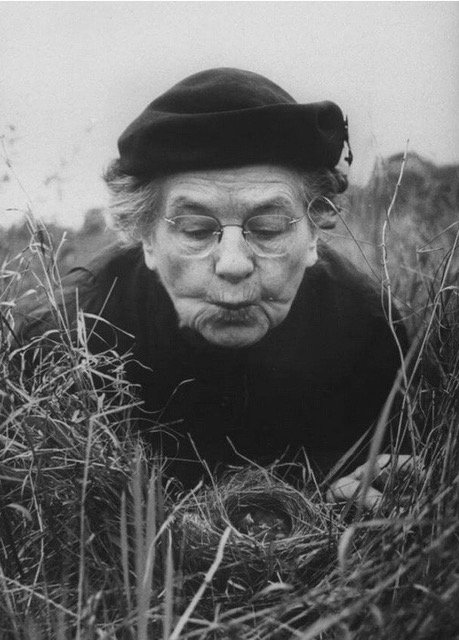Groundbreaking Backyard Bird Research
By Bhavana Padiyath, GEAS Guest Blogger
Editor’s note: The contributions of 20th century women to the field of ornithology are significant but not well known. Guest Blogger Bhavana Padiyath introduces us to pioneering scientist, Margaret Morse Nice.
“Research is a passion with me; it drives me; it is my relentless master.” - Margaret Morse Nice
Margaret Morse Nice was an American ethologist and ornithologist who is best known for her long-term behavioral study of Song Sparrows (Melospiza melodia). Her work was instrumental in the development of the field of ethology, the scientific study of animal behavior. A Mexican subspecies of Song Sparrow (Melospiza melodia niceae) is named after her.
Margaret Morse was born in Amherst, Massachusetts, on December 6, 1883. Nice's early interest in nature was encouraged by her mother, who taught her the names of wildflowers and took her on nature walks. She attended Mount Holyoke College, where she studied zoology and botany. After graduating in 1906, she taught high school science for two years. In 1908, she married Leonard Blaine Nice and moved to Chicago where she began studying the Song Sparrows in her backyard. During the next 30 years, she conducted extensive research on the Song Sparrow, including how they learn songs and their breeding behavior, migration patterns, and social interactions.
Margaret Morse Nice
Song Sparrow by Ken Miracle
Groundbreaking Discoveries From Backyard Sparrows
She banded 69 pairs of birds and tracked their movements, breeding habits, and modes of communication. One of her most notable contributions was her research on the role of learning in the development of bird songs. She documented the process through which young male Song Sparrows learnt their songs from adult tutors, and how it was influenced by the social environment. This concept of song learning and its cultural transmission among birds laid the foundation for understanding territorial behaviors, courtship rituals, and vocalizations in other animals.
Nice's work was groundbreaking in several ways. It was the genesis of the ethogram, which is a comprehensive catalog or inventory of an animal's behaviors, actions, and activities in its natural environment.
First, she used a combination of observational and experimental methods to study animal behavior. This was a departure from the traditional approach, which relied primarily on dissection and observation only in captivity.
Second, her work was longitudinal, meaning that she followed the same individuals over time. This allowed her to track changes in their behavior over the course of their lives.
Third, Nice was interested in the role of learning and experience in animal behavior. She showed that Song Sparrows learn their songs from their parents and that they can modify their behavior in response to their environment. Margaret Morse Nice's meticulous field observations and insights paved the way for future generations of researchers in the study of ethology and behavioral ecology.
Song Sparrow by Dondi Black
Song Sparrow song
Margaret Morse Nice
It Would be Better To Be a Bird
Nice wrote nearly 250 papers on birds, 3,000 book reviews and several books including the Birds of Oklahoma (1924, 1931), The Watcher at the Nest (1939) and her autobiography, Research Is a Passion With Me: The Autobiography of a Bird Lover. In it she writes:
“I decided it would be better to be a bird. Birds are very busy at one period each year caring for babies, but this lasts only a few weeks with many of them, and then their babies are grown and gone. Best of all, they leave their houses forever and take to camping for the rest of the year. No wonder they are happy.”
There was widespread gender discrimination in funding for scientific research during that era and almost all of Nice’s research was self-funded. Her dedication and expertise were recognized by her peers. She became the second woman (after Florence Merriam Bailey) to receive the William Brewster Memorial Award from the American Ornithologists' Union (1938) and was elected to the National Academy of Sciences (1960). She was also the first woman to be elected president of the Wilson Club, a prestigious ornithological organization.
Nice died in 1974, at the age of 90. Her legacy lives on through her contributions to the study of animal behavior, especially in the fields of avian ethology and songbird vocalizations.
Dean of Elmira College Richard Bond (who conferred her an honorary doctorate), said of Nice: “She used the outdoors near her home as her laboratory and common species of birds as her subject. In so doing, she joined the ranks of the eminent ornithologists of all time, who saw so much in what appeared common to so many.”




